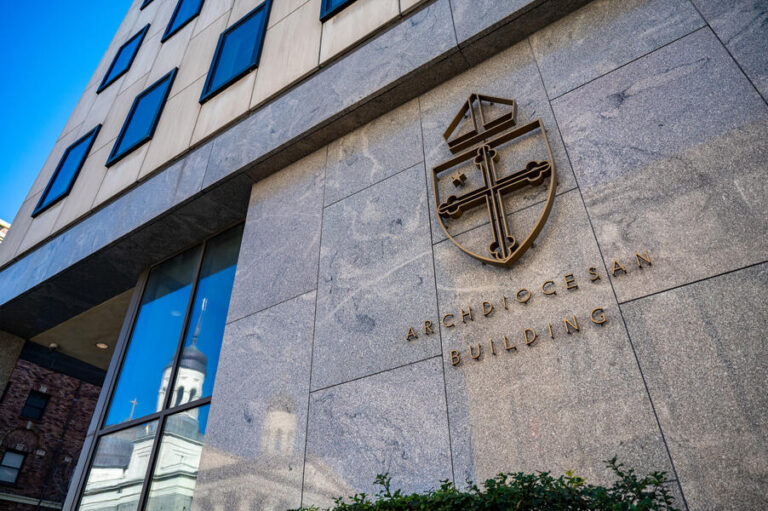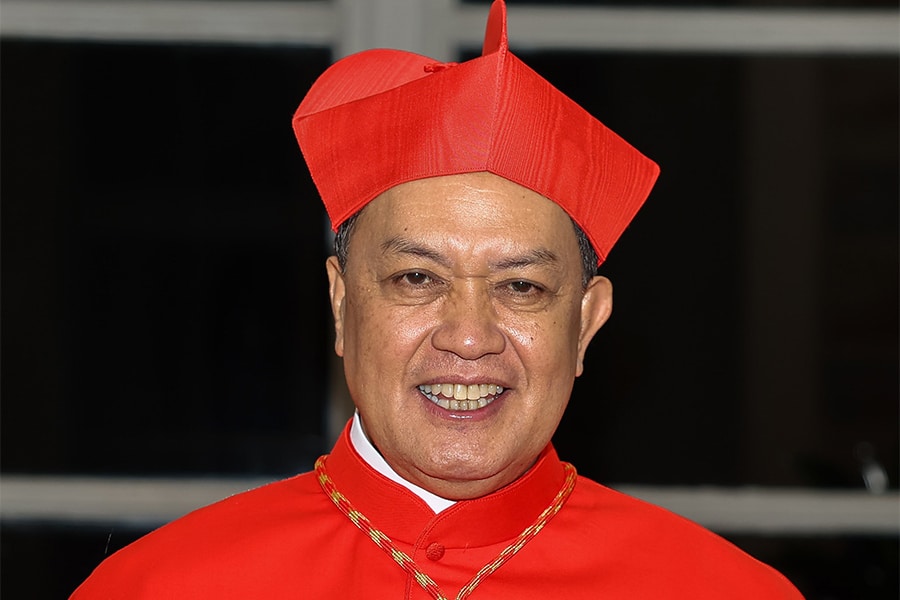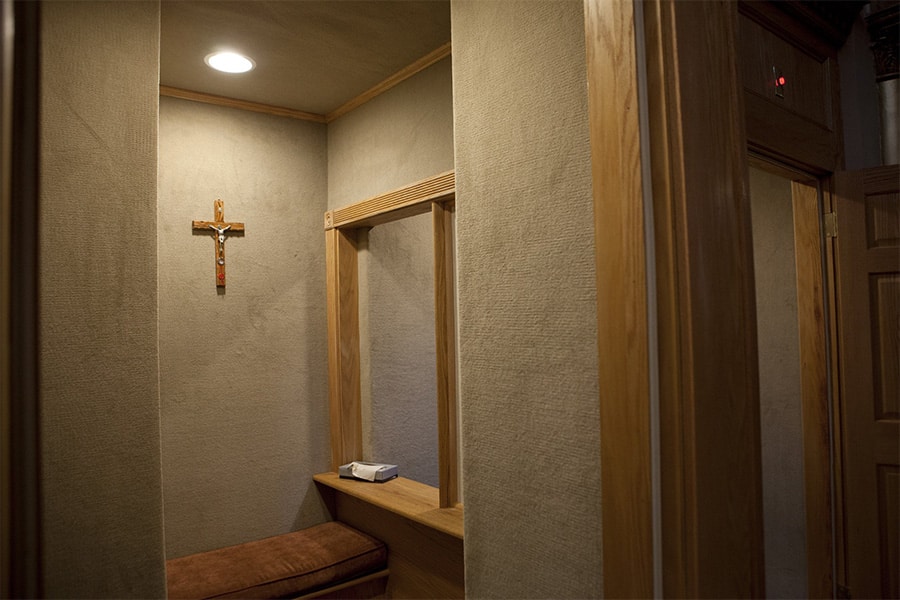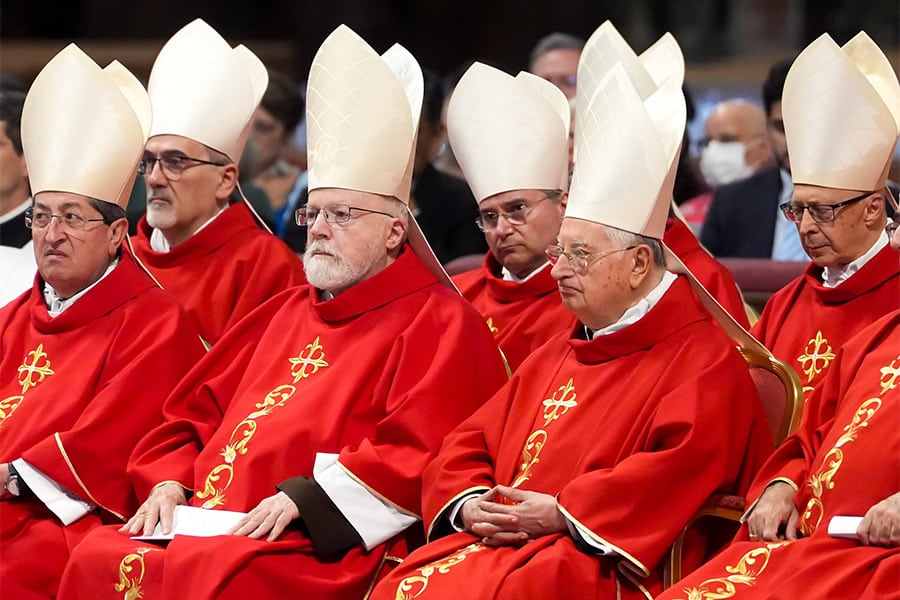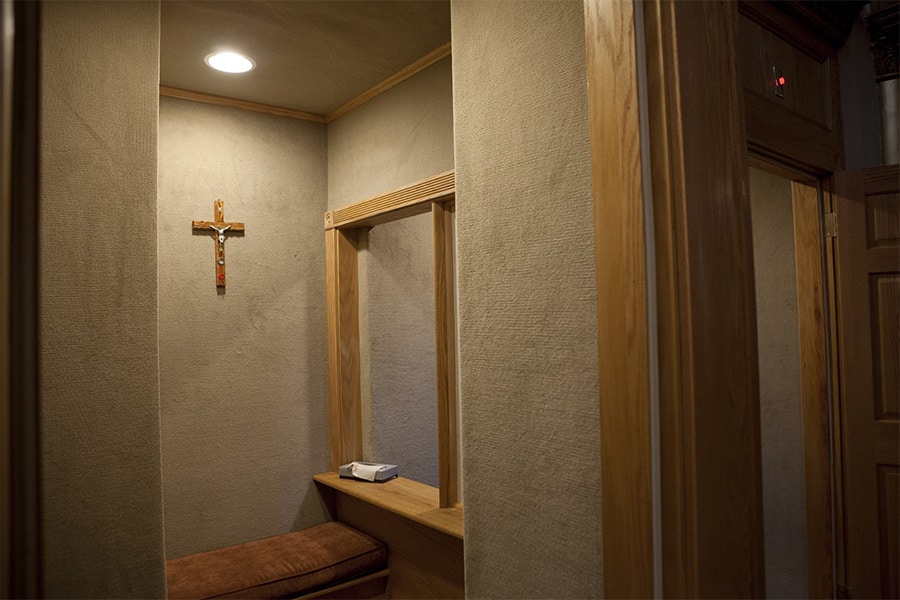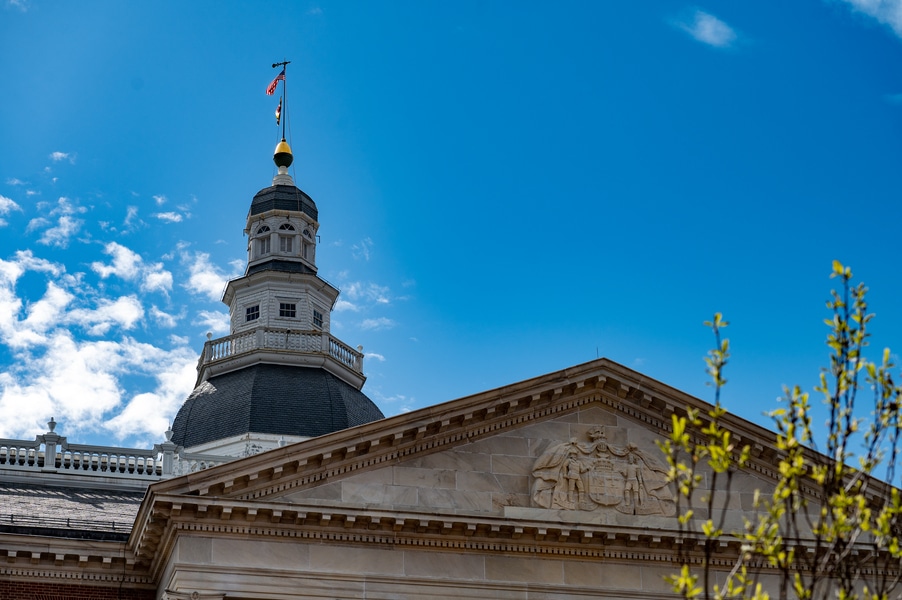As of 11:59 p.m. May 31, the deadline closes for those who wish to make a claim against the Archdiocese of Baltimore for instances of sexual abuse prior to Sept. 29, 2023, by clergy or other personnel in the Chapter 11 bankruptcy reorganization.
According to Blake Roth, an attorney from Holland & Knight who represents the Roman Catholic Archbishop of Baltimore as the debtor in the case, the total number of claims will include more than just claims for abuse. It will include some duplicates or claims that were later amended and superseded.
The number also includes “some commercial claims that have nothing to do with abuse,” Roth said. In terms of duplicates, if someone first filed a regular bankruptcy claim and later amended it with the supplemental form for abuse victims provided by the court, it would be listed as two claims. The same is true if someone filled out a form online and mailed in a hard copy as well, he said.
He said it will be at least two to four weeks after the deadline before anyone knows exactly how many individual claims for abuse have been filed. For example, Roth said, he is aware of at least one claim that alleges abuse by a Protestant minister, which would have nothing to do with the archdiocese. He said other allegations include Scout leaders or other lay people who may not be connected to the church. Such claims will have to be researched.
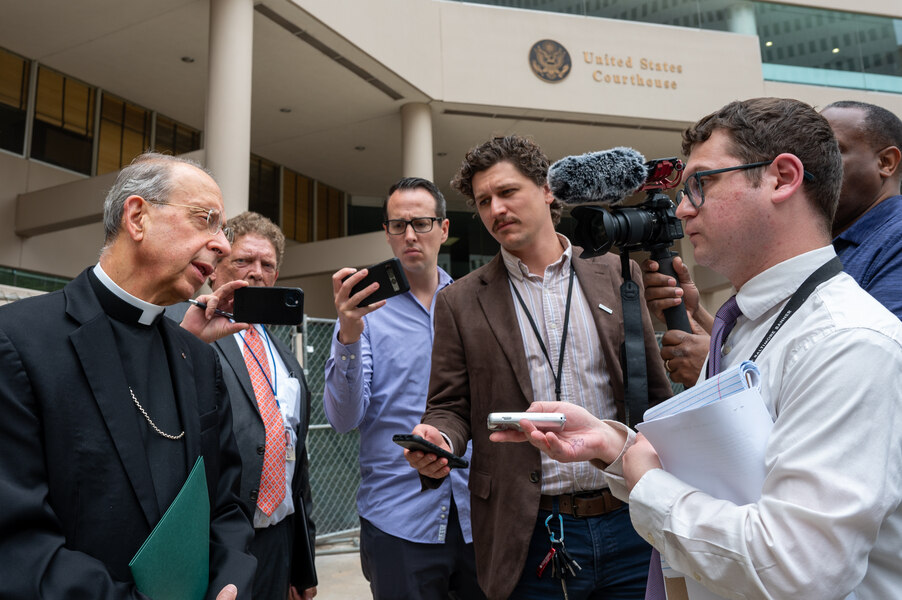
According to Marie T. Reilly, a bankruptcy law expert and professor at Penn State Law at Penn State University, after May 31, known as the bar date, claims would be disallowed, except for certain circumstances for those who could not file by the deadline,
If a victim-survivor has not filed a proof of claim form and cannot come up with an excuse why he or she could not or did not file a claim, “Your claim is treated as barred – the bankruptcy word is ‘disallowed’ – meaning you are not entitled to collect anything on account of your claim or vote or participate in the bankruptcy case,” she said.
Also, if the debtor – in this case the Roman Catholic Archbishop of Baltimore – is able to confirm a plan of reorganization, the debtor would be released from any liability for such claims.
In the case of diocesan bankruptcies, which Reilly has studied and written on extensively, that release often includes parishes, schools and other affiliated entities through what is called a channeling injunction.
The archdiocese went into the Chapter 11 process with two goals: to equitably compensate survivors and continue the archdiocese’s mission and ministries.
“I don’t think we can begin without recognizing the harm that was done to so many victim-survivors and the ongoing challenges that they face as the result of having been abused sexually as children and young people,” Archbishop William E. Lori said at the time of the filing.
The archbishop participated in two court sessions in April and May during which victim-survivors were allowed to address the court to provide poignant accounts of the abuse they had endured as children and the effects it has had on their lives. The victim statements were not entered as evidence or as part of the court record.
The bankruptcy case, overseen by Judge Michelle M. Harner, approved a proof of claim form and a supplemental form that allows victim-survivors to state the nature of their claim, including any relevant information about the alleged abuser and the location and number of times the alleged abuse occurred.
Reilly said that in other diocesan cases, some claims have been set aside because the abuse happened in a different diocese, the alleged abuser was a member of a religious order over whom the diocese had no jurisdiction or another valid defense.
“In order to get to a confirmed plan, the creditors committee, the insurers and the debtor have to have at least some idea of the merits, the value and validity of these claims under non-bankruptcy law,” Reilly told the Catholic Review days before the deadline.
She said that providing the bare minimum of information makes it hard to move the settlement process along, but that the debtor also doesn’t want to put obstacles to those who wish to participate in the case.
Reilly said that in such cases, the debtor is responsible for letting the public know about the opportunity to file a claim.
The archdiocese was required to widely disseminate information about the claims process before the bar date. Christian Kendzierski, executive director of communications for the archdiocese, noted that the information was posted at archdiocesan locations, parishes and schools; verbal announcements were made at parishes during Masses; and it was advertised widely, both regionally and nationally in print and broadcast media. Social media was also used to share the claim date and reorganization process.
The form was designed so that a victim-survivor could complete it without the help of an attorney. “The claim form is usually signed by the creditor; however, attorneys are able to sign on behalf of their clients,” Roth, the archdiocese’s attorney, said.
“Upon the passing of the bar date, claims will be evaluated and mediation will ensue between the archdiocese, the (Unsecured Creditors) Committee and various carriers that the archdiocese believes provided insurance coverage relating to or otherwise applicable for the survivor claims,” he said.
Once the negotiations come up with a monetary value of the settlement fund, Penn Law’s Reilly said that one of the steps of the process will be for the court to appoint an independent claims administrator, who will make decisions of how much compensation each victim receives.
The settlement trustee, or mediator, is a neutral party with experience with similar situations.
Working with a team of people, the mediators evaluate the claims and assign a point value, Reilly said. Such criteria might include the age when the alleged abuse occurred, whether there were multiple occasions, the egregiousness of the abuse and whether there is evidence the archdiocese knew about the abuse.
“The more points you have, the larger piece of the settlement trust you’re likely to take home,” Reilly said.
The Unsecured Creditors Committee, which is made up of seven victim-survivors who represent all the victim-survivors in the case, does not control the settlement trust, but it does have influence in negotiating the terms.
The Archdiocese of Baltimore and the Creditors Committee filed a Joint Request for Mediation with Harner May 23, noting, “Permitting the Debtor and the Committee to concentrate their efforts and resources on mediation will work to minimize the litigation expenses of the Debtor and the Committee.”
The motion asked Harner to appoint Robert J. Faris and Brian J. Nash as co-mediators. Faris is a sitting bankruptcy judge in the District of Hawaii and recently served as mediator in the successful resolution of the Archbishop of Agaña’s (Guam) Chapter 11 bankruptcy case. Nash has been a practicing attorney since 1975 and been involved in mediating more than 2,000 cases involving claims of medical negligence and sexual abuse.
In an email message to members of the archdiocese May 30, Archbishop Lori acknowledged the motion to appoint the mediators, saying, “The archdiocese remains committed to working with the Survivors Committee and others to achieve an agreed-upon resolution of these reorganization proceedings.”
The archdiocese’s Chapter 11 filing was prompted by the passage in 2023 of the Child Victims Act, which removed the statute of limitations in civil suits regarding child sexual abuse that were previously barred because the abuse happened decades ago. It capped damages against public institutions such as government schools at $890,000 per claimant for injuries arising from an incident or occurrence; non-economic damages awarded to a single claimant against individuals or private institutions such as churches are capped at $1.5 million per defendant.
Several entities challenged the constitutionality of the CVA, based on a statute of repose that was in legislation in 2017 that extended the ability to file a suit to age 38 – up from age 25. That expansion was supported by the church.
The Maryland Supreme Court will hear arguments Sept. 10 regarding the constitutionality of the act, including cases involving the Church of Jesus Christ of Latter-Day Saints, the Key School, the Board of Education of Howard County and the Archdiocese of Washington.
“Regardless of how the constitutionality of the CVA is determined, the Archdiocese of Baltimore will remain committed to reaching its dual goals in this bankruptcy process – providing reasonable and equitable compensation for survivors while preserving the ability of the archdiocese and its constituent parts to undertake their collective missions and ministries,” the archdiocese’s Kendzierski said.
Reilly said there is no standard timeline on resolving diocesan bankruptcy cases. Some have taken years to finalize a plan.
The fact that the Archdiocese of Baltimore is now one of about three dozen to have entered Chapter 11 in light of a large number of abuse claims, the parties have the benefit of that experience in creating a consensual plan. “The lawyers who are representing all of the parties know what they’re doing,” Reilly said. “They’re not making it up from scratch like we saw in the early cases in the 2000s.”
Read More Child & Youth Protection
Copyright © 2024 Catholic Review Media

